Mass grave markers in Hiroshima, photographed by Lieutenant Wayne Miller in September 1945. (US Navy / National Archives)
Editor's note: Because the G-7 meeting will open in Hiroshima on Friday, May 19, 2023, the Bulletin is republishing this earlier article by Alex Wellerstein on how many people actually died in Hiroshima and Nagasaki during the atomic bombings.
By Alex Wellerstein
August 4, 2020
How many people died as a result of the atomic bombings of Hiroshima and Nagasaki? There is one thing that everyone who has tackled this question has agreed upon: The answer is probably fundamentally unknowable. The indiscriminate damage inflicted upon the cities, coupled with the existing disruptions of the wartime Japanese home front, means that any precise reckoning is never going to be achieved.
But beginning in 1945, people have tried to estimate the number of the dead and injured. The casualties from the first atomic bombings are not of mere historical interest. They are part of how we understand the effects of nuclear weapons today — for Hiroshima and Nagasaki, thankfully, remain the only instances of these weapons being used in warfare, and thus provide an invaluable “data set” upon which to base other understandings and simulations. The estimated casualties also play a nuanced role in the various narratives and arguments about the end of World War II.
How many died?
The most credible estimates cluster around a “low” of 110,000 mortalities and a “high” of 210,000, an enormous gap. (The estimates for each city have a range of ±10,000.)
There is no evidence that either of these estimates was made inaccurately or dishonestly, but they come from different sources and eras.
Low
High
70,000 at Hiroshima
+ 40,000 at Nagasaki
110,000 total
Made by the US military • Issued in the 1940s • Emphasizes the military necessity of the attacks
Low
High
70,000 at Hiroshima
+ 40,000 at Nagasaki
110,000 total
Made by the US military • Issued in the 1940s • Emphasizes the military necessity of the attacks
Earliest estimates
Hiroshima was bombed on the morning of August 6, 1945. The city, flat and surrounded by hills, was in many ways an ideal target for the atomic bomb, at least from the perspective of its creators. Their goal was destruction and spectacle, to show the Japanese, the Soviets, and the whole world, what the potential of this new weapon was. The geography of Hiroshima meant that a bomb with the explosive yield of “Little Boy” (the equivalent of 15,000 tons of TNT), detonated at the ideal altitude, could destroy nearly the entirety of the city.
Neither those in the airplanes that observed the attack nor those on the ground experiencing it could get more than a qualitative sense of the destruction in the immediate aftermath; the smoke, fires, and carnage were too great. Observation aircraft tried in vain to photograph the damage later in the day, but the city was too obscured by smoke to accurately assess. On the ground, eyewitnesses were largely unaware that it had been a single attack, and a consistency across accounts is their shock at realizing that the entire city had been affected at once by a single plane.
The American announcement that it had been an atomic bomb was released 16 hours later, and in response the Japanese high command dispatched a scientific team to make measurements to confirm or refute the claim. The Americans, in turn, scheduled further overflights, seeking photographic evidence of the effectiveness of the bomb. These efforts would inaugurate what has been 75 years of research into the effects of the bombing, both in the United States and in Japan.
Aerial photos of Hiroshima before and after the "Little Boy" bomb was dropped on August 6, 1945. (United States Strategic Bombing Survey, US Army Air Forces)
On August 8, news reports from Japan, plus a damage report created by the United States, began to paint a picture of the destruction. Aerial surveys revealed at least 60% of the city’s “built-up areas” were destroyed, leading to the conclusion that perhaps “as many as 200,000 of Hiroshima’s 340,000 residents perished or were injured,” as one United Press story put it. The same story quoted “unofficial American sources” that estimated that the “dead and wounded” might exceed 100,000.
Such numbers were large, and appear to have had a sobering effect on President Harry S. Truman. After the August 9 Nagasaki raid (which he had no apparent foreknowledge of), he would put a stop to further bombing, telling his cabinet that “the thought of wiping out another 100,000 people was too horrible,” according to an August 10, 1945, diary entry by then-Secretary of Commerce Henry A. Wallace. It is not clear that Truman had any real sense of how many casualties there would have been prior to the attacks. The only pre-Hiroshima estimate on record is the recollection from Arthur Compton that at a May 31, 1945, meeting of the Interim Committee, J. Robert Oppenheimer had suggested that an atomic bomb dropped would kill “some 20,000 people” if exploded over a city. This is not recorded in the meeting minutes, nor in any other report or correspondence, so it does not seem that this estimate had any special weight to the participants. (Compton amended that this estimate had assumed people would seek shelter; given that no warning was issued for the attacks, this did not occur.)
Oppenheimer would comment obliquely on this variance in before-and-after estimates during the hearing on his security clearance in 1954:
This preamble is merely to suggest how widely the earliest assessments varied—by an entire order of magnitude—and to give some sense of the context of what followed: Aside from the many technical and historical reasons one might want to know the consequences of the bombs, the number of dead impinges on any moral and ethical evaluations of the bombings as well, even for those like Oppenheimer and Truman. Japanese claims of radiation casualties would soon follow, and vigorous American denials (in the face of any actual evidence) heightened the stakes considerably.
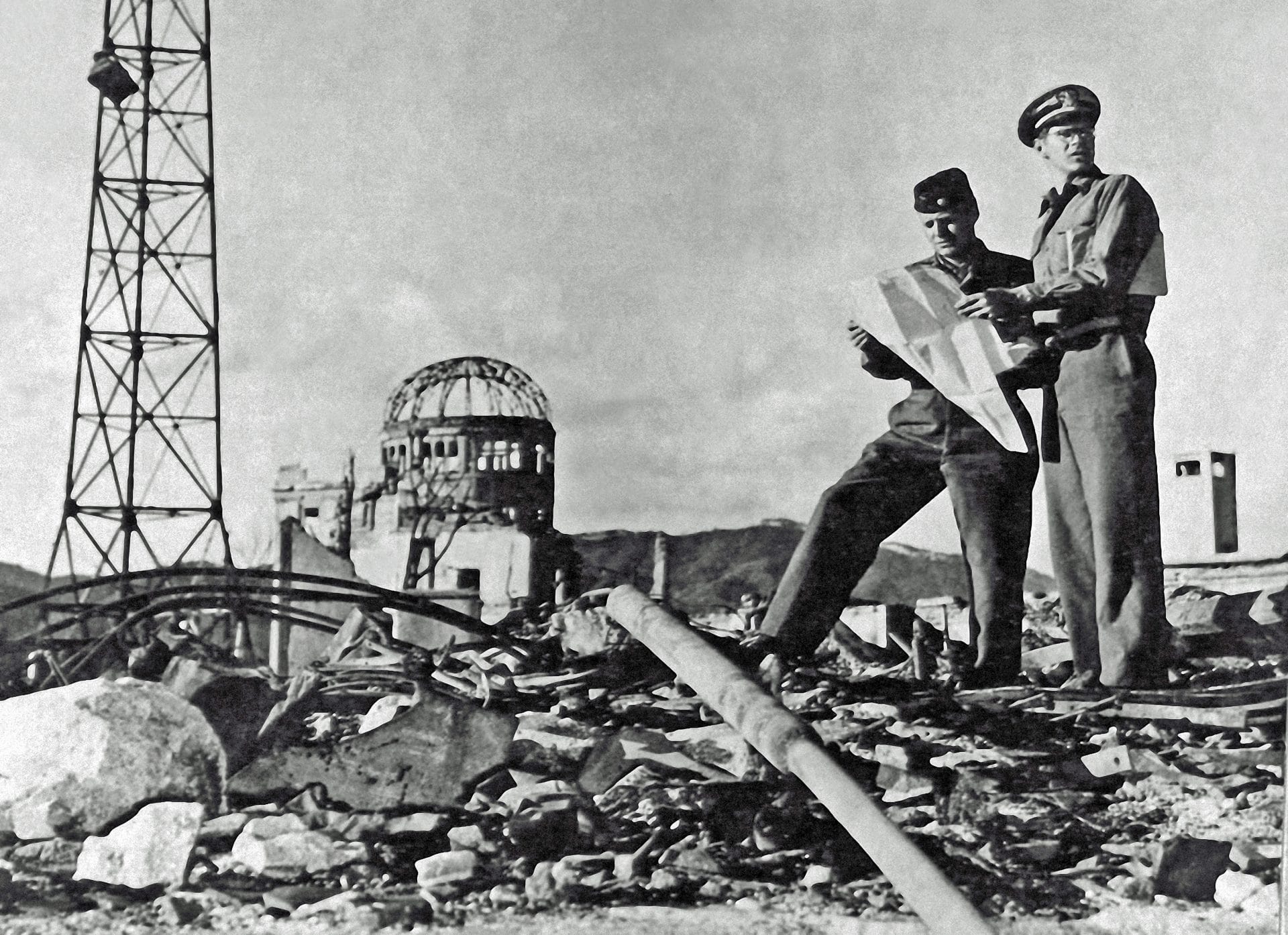
Now an iconic part of Hiroshima's Peace Memorial Park, the "A-Bomb Dome" was the site of an exhibition hall just 500 feet from ground zero. (Prisma Bildagentur / Getty Images)
Occupation estimates
On August 30, 1945, one of the first American teams to land in Japan were scientific agents of the Manhattan Project, tasked with understanding the effects of the atomic bombings. These representatives went to Hiroshima and Nagasaki to assess every aspect of the attacks, with an eye both to understand what had happened, to measure any lingering radioactivity, and also to learn what could be generalized as “the effects of atomic bombs,” for use in future planning. One of their tasks was to estimate total casualties. Col. Stafford Warren, the Chief Medical Officer of the Manhattan Project, and a pioneer in nuclear medicine, led this effort. Though the numbers derived have been cited many times since, it is worth quoting Warren’s own caveats on them, delivered before Congress in February 1946:
One very great source of confusion was the fact that the Japanese themselves had no information, no precise data. They did not know what the population of either city was beforehand. They had very little way of telling how many people had survived or had returned to the city.
I am embarrassed by the fact that even though I led a medical party which was supposed to get figures on the mortality, and so on, that we could not come back with any definitive figures that I would be able to say were more than a guess.
The only actual fact that we could get at the end of the second month of study, at the beginning of October, was that at Nagasaki they had recorded the burning and cremation of 40,000 bodies. It is my belief that there must have been 20,000 or 30,000 more in the ruins, buried or consumed by the fire.
The data in Hiroshima was likewise inadequate and I see no way of putting a precise figure on the mortality or how a precise figure can ever be put on the total casualties.
“I am embarrassed by the fact ... that we could not come back with any definitive figures that I would be able to say were more than a guess.”
Col. Stafford Warren, Chief Medical Officer of the Manhattan Project
Looking east toward the bomb hypocenter in Hiroshima from approximately 700 meters away, before and after the explosion. The Geibi and Sumitomo bank buildings remaining in the upper right stand in stark contrast to the surrounding devastation. (From Medical Effects of Atomic Bombs Vol. 1, Office of the Air Surgeon, 1951)
The Manhattan Project report, issued in 1946, lamented that there had been “great difficulty” in doing this, owing to “the extensive destruction of civilian installations (hospitals, fire and police department, and government agencies), the state of utter confusion immediately following the explosion, [and] the uncertainty regarding the actual population before the bombing.” The report’s authors did not elaborate upon their methodology. At Hiroshima, they estimated that out of a pre-raid population of 255,000 people, 66,000 had died, and 69,000 were injured. At Nagasaki, out of a pre-raid population of 195,000, 39,000 had died, and 25,000 were injured. It is of note that even the head of the investigation, Warren, seems to have considered the figure for Nagasaki low.
The differences between the results at Hiroshima and Nagasaki were attributed to the differing population sizes and the topography. Nagasaki was a less ideal target from a bomber’s perspective, because its city was not as concentrated as Hiroshima, and was divided by a ridge of hills that partially sheltered the city. Additionally, the bomb did not detonate in Nagasaki’s city center, but in the Urakami Valley to the northwest of it.
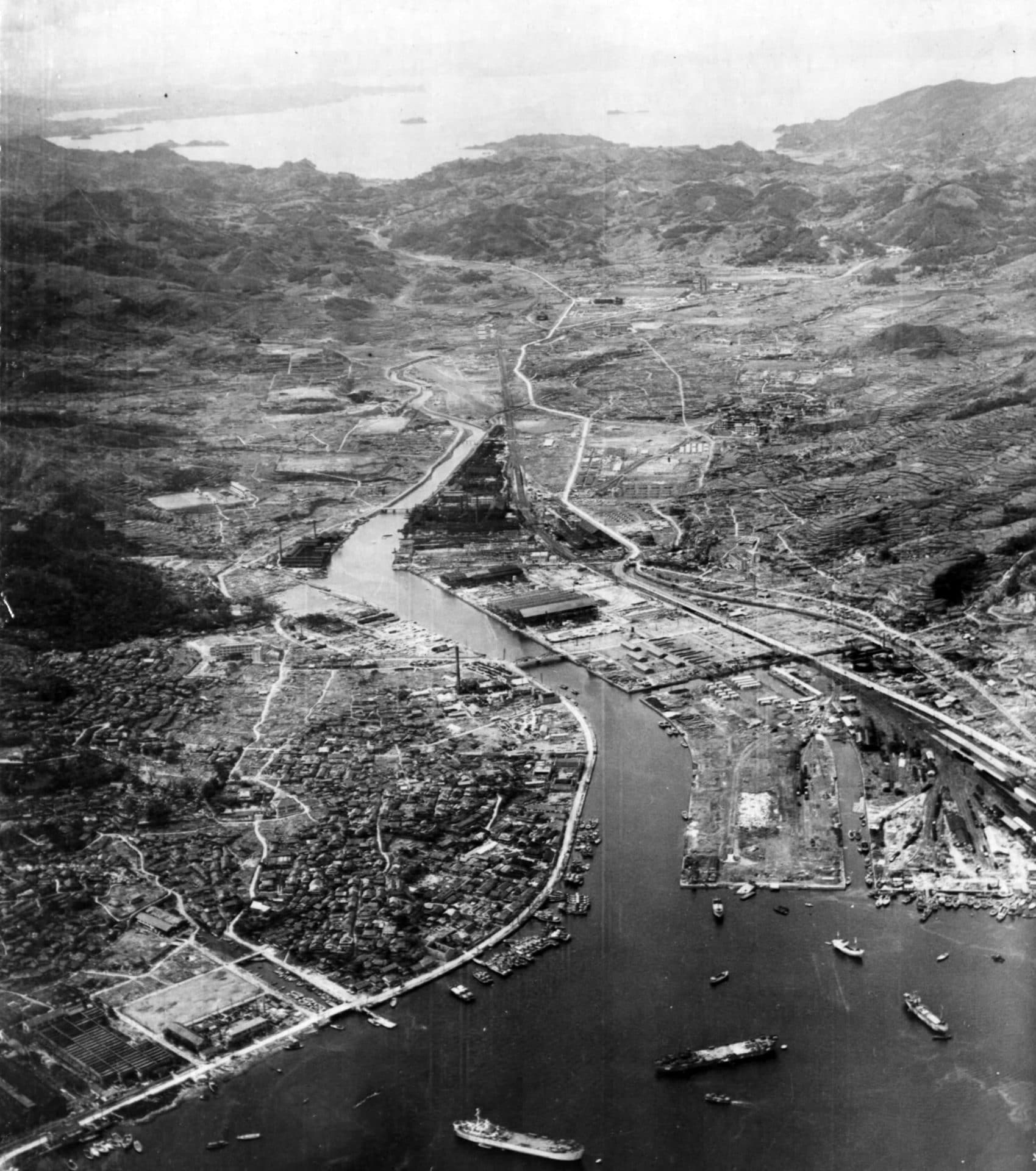
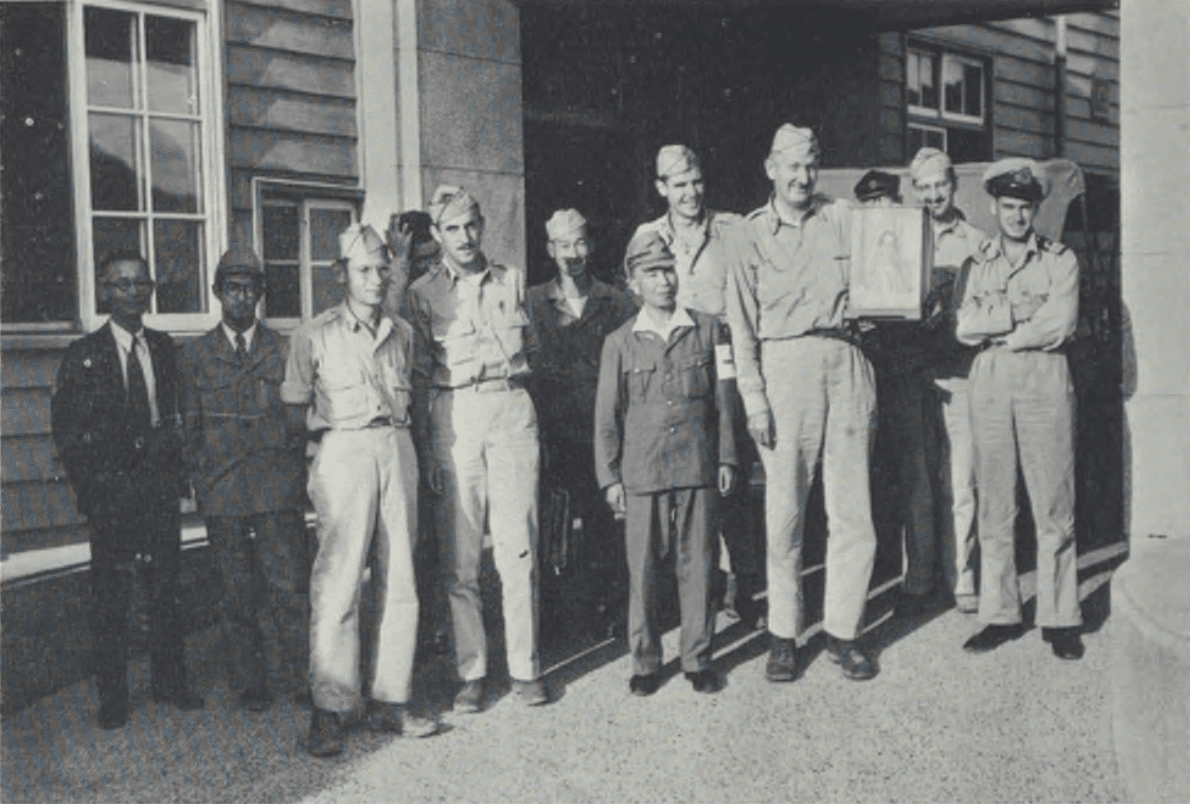
The Manhattan Project was not the only effort to estimate these casualties. Colonel Ashley W. Oughterson was tasked with making a survey of casualties for the Army, which accompanied the Manhattan Project surveyors on their initial visits to Hiroshima and Nagasaki. Oughterson and Stafford Warren were subsequently assigned by the Supreme Commander for the Allied Powers to work with Japanese scientists in a Joint Commission for the Investigation of the Atomic Bomb in Japan (hereafter referred to as the “Joint Commission”). At the same time the Joint Commission was being created, the Navy also created its own survey mission, run by Captain Shields Warren. (The two Warrens were unrelated.) Though the Joint Commission and the Naval effort were not officially linked, they shared data and methodology, and eventually would release a combined report. All of which is to note that there was considerable interest in these topics, but that the groups that worked on it were essentially overlapping with one another, using the same data and assumptions. The fact that they all came to similar conclusions on the casualty counts should be read in this light: They were not truly “independent” estimates.
The Joint Commission’s estimates for the dead and injured at Hiroshima were that, out of 255,200 inhabitants at the time of the bombing, 64,500 (25.5%) had died by mid-November 1945, and an additional 72,000 (27%) had been injured. At Nagasaki, there was considerably more uncertainty about the population at the time of the bombing, but the Joint Commission settled on the figure of 195,290 inhabitants, out of which 39,214 (20.1%) had been killed by mid-November 1945, and 25,153 (12.9%) were injured.
The high degree of apparent precision in these numbers is fairly misleading. The detailed statistical report that the Joint Commission created indicates a great number of sources of uncertainty. To note this is not to undercut their effort: They recognized the deficiencies of the data they had access to, and of their methods, and appear to have been trying their best. But their estimates for the total population of the cities, especially Nagasaki, were forever fraught. The Japanese did not, they found, keep good records on this during the war. The best “proxies” for population were rice ration cards, but these apparently omitted thousands of transient laborers, and were not always up to date. While the Japanese had attempted to keep some track of the number of injured treated and dead disposed of in the cities, the chaos of the bombings and the end of the war likely led them (in the Joint Commission’s estimates) to undercount both of these significantly. Bodies in both cities, for example, were disposed of through campaigns of outdoor cremation; bones and remains were evident at some sites even weeks after the bombings, when the Americans arrived.
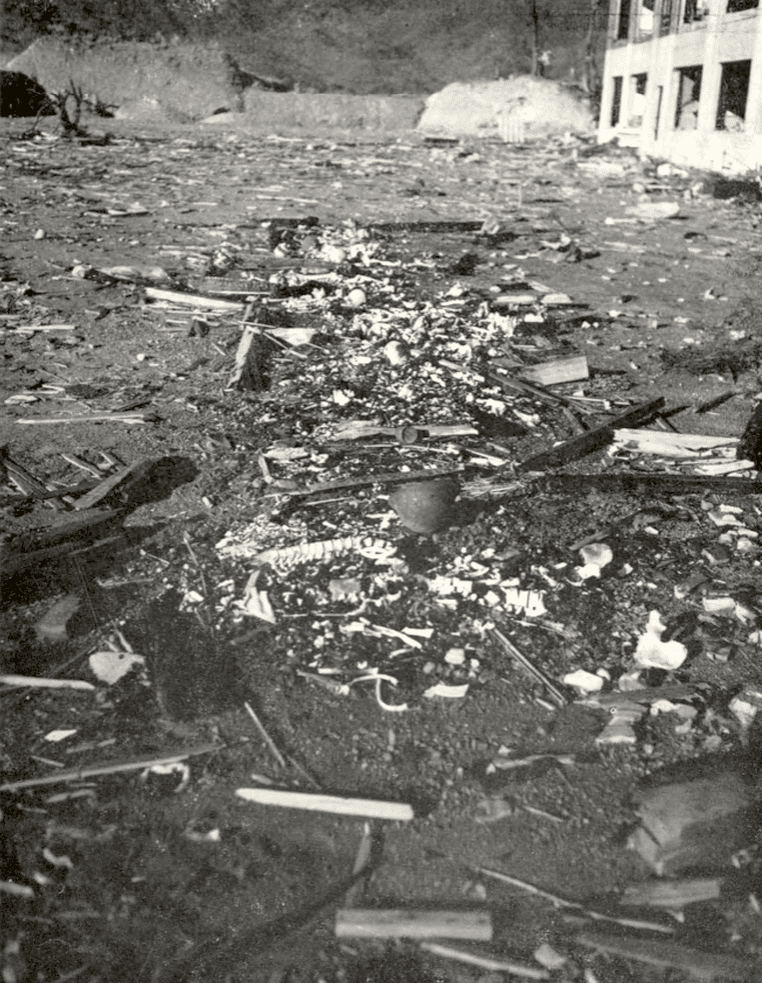
The basic methodology of the Joint Commission was as follows. First, they needed to establish how many people were in the cities. They canvassed as many Japanese sources and authorities as they could on this subject. They lamented that even in Nagasaki, where records were far better preserved than at Hiroshima, the administrative records were of dubious value:
The average Japanese official has no passion for accuracy, and remains unperturbed when figures do not balance and totals fail to agree. The normal sources of information on the trend of populations — statistics of births and deaths — were of no value, because in Japan these vital data are not legally registerable. … The percentage of the population who were not registered for any of a variety of reasons was not known. Various officials estimated that as few as 80% of the residents of the city were on the rice ration lists. Other officials intimated that the lists were occasionally padded, or at least that the names of departed citizens were frequently not deleted. In addition to these qualifying factors, there is a final one — the nature of the records themselves. All the tables that were available were reproduced by hand from original sources, and a careful scrutiny invariably disclosed obvious errors in copying, as well as mistakes in arithmetic.
Despite these perceived limitations, the Joint Commission attempted to develop an underlying model of how many people were in the cities at the time of the bombing, and where they specifically were relative to ground zero.
Separately, they also worked to establish mortality curves for each of the bombings. These show the relationship between distance and mortality: how many people would be dead or injured based on how far they were from ground zero. This was established by finding the few places where the Japanese had very good records about how many people were at a given site on the mornings of the bombings, and then looking at their fates. Once the curves were established, the researchers could take their estimates for the number of people who were at various distances from ground zero (chopped into “zones”), and then multiply the mortality and injury percentages for each zone against those people, deriving the final casualty estimates in that manner.
One of the most useful sources they consulted was also one of the most grim: schools and schoolchildren, which kept meticulous attendance records. Not only were there good records, but “the headmasters in many instances had made earnest efforts to trace families by letter, messenger, or personal contact.” Even better, the researchers found that many of the children were not in their classrooms at the time of the bombing, but had been detailed into “patriotic work parties” throughout the city, working in factories or working on firebreaks. So this provided data for many different distances from the bombing, and different types of structures. In this tragic fashion, the most vulnerable of those who died at Hiroshima and Nagasaki played a key role in establishing the total death counts.
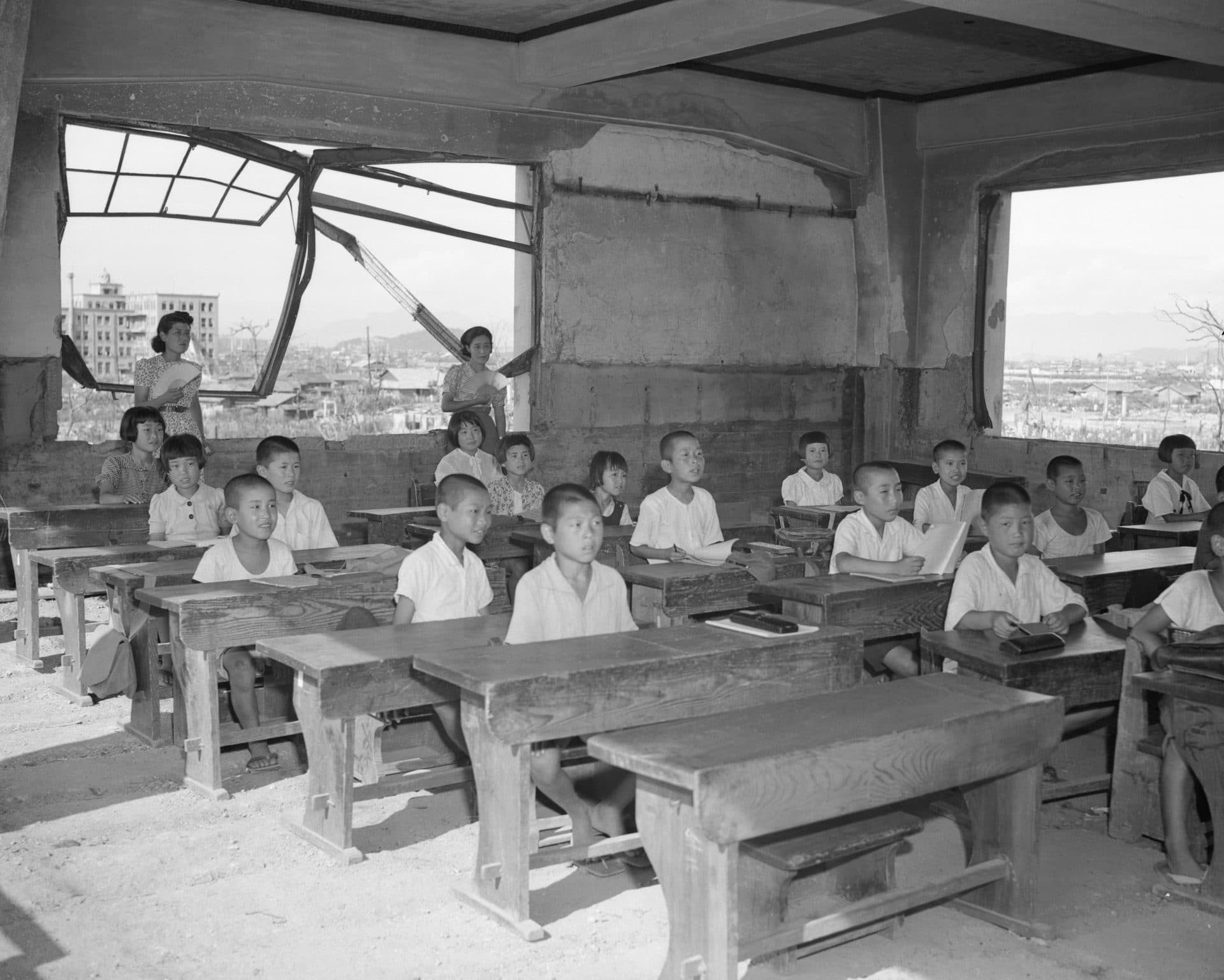
The most vulnerable of those who died at Hiroshima and Nagasaki played a key role in establishing the total death counts.
The Joint Commission investigated and feared many sources of under- and over-counting the total population in the city, and sought to minimize its errors by conducting other approaches as well, such as surveying survivors. They also compared their own calculations to those of other groups. Through this mixed-method and comparative work, they seem to have had a high degree of confidence that their estimates were good ones, though one needs to take the full chain of methodology into account in assessing them in retrospect. In any event, the apparent degree of precision, counting down to the individual dead or injured, is perhaps unwarranted. In a later version of the report, published by McGraw-Hill in 1956, these had been rounded to 64,000 dead at Hiroshima and 39,000 in Nagasaki, both with a margin of error of 10%.
It is of some interest that the version of the Joint Commission report that was released in 1951 did not contain the methodological discussions; the relevant statistical volume was classified as “Restricted” by the Army until 1954. Its classification is likely not because of any perceived deficits in the methodology, but because the detailed analysis includes discussions of how different types of structures affected the mortality curve, a topic which touched upon the question of defenses from atomic bombs, then still a sensitive topic.
Other estimates made in the immediate postwar, for which the methodology is not available, include the following, which were cited in some of the aforementioned reports:
- Hiroshima Red Cross Hospital estimated 70,000 dead, and another 50,000-60,000 dead within the next two months, for a total of around 125,000 dead;
- The British estimated, based on their own population estimates, that some 70,000-90,000 people died at Hiroshima, and an additional 100,000 were injured; at Nagasaki, they initially estimated 39,500 killed, but later reduced this to 34,000; they also estimated that at least 60,000 were injured at Nagasaki;
- The Navy technical mission to Japan estimated 80,000 dead at Hiroshima and 45,000 at Nagasaki;
- The United States Strategic Bombing Survey’s Civilian Defense Division estimated that 25,761 had died in Nagasaki, with 30,460 injured and 1,927 missing;
- The Supreme Commander for the Allied Powers headquarters put the dead at Hiroshima at 78,000 in early 1946;
- In July 1946, Lt. Col. George V. LeRoy, a physician assigned to the Joint Commission and a member of the Manhattan Project’s health physics division at the University of Rochester, gave an address that claimed that at Hiroshima 80,000 had died and 40,000 had been injured, and at Nagasaki 40,000 had died and 25,000 had been injured.
Again, the fact that most of these numbers hover around similar orders of magnitude (66,000-90,000 dead at Hiroshima, 25,000-45,000 at Nagasaki) should probably be understood as being essentially based on the same types of data for the populations of the cities, and they may not be totally independent estimates.
Various Japanese estimates were also made during this time. As we have seen, the American forces viewed Japanese accounts with some skepticism, rightly or wrongly. At the end of August 1945, officials in both Hiroshima and Nagasaki prefectures estimated that there were 63,614 dead and missing at Hiroshima, and 25,672 dead and missing at Nagasaki. The Joint Commission concluded that an investigation into the data behind these estimates “reveals several errors in calculation and judgment.”
The police at Hiroshima prefecture estimated that there were 92,133 dead and missing from the city at the end of November 1945. In March 1946, the city of Hiroshima put the same number at 64,610. In August 1946, the city put the number of dead and missing at one year after the bombing at 122,338. In 1949, a Nagasaki City committee estimated that 73,884 people had died. Both of these latter estimates are obviously considerably higher (nearly double) the other estimates, and it is not clear what the methodologies used to compile them were. (They are cited in Table 10.11 on page 364 of Hiroshima and Nagasaki: The Physical, Medical, and Social Effects of the Atomic Bombings.)
The only other estimate of note that I have come across from the 1940s is from Shinzo Hamai, the mayor of Hiroshima in 1949, who asserted that 210,000-240,000 had died from the bombing. He claimed to base this on his own personal experience in working with the rice rationing cards, and also on his belief that the military dead were removed from the official statistics. (The United States Strategic Bombing Survey had previously estimated that only 6,789 soldiers, out of 24,158 in Hiroshima, were killed or missing because of the bombing.) The only reportage I have on this estimate is from American newspaper sources (and so may be inadequately communicated or poorly translated), but it is of interest not only because of its significant variance with the other numbers given, but also because it was reported on quite widely in 1949 specifically because of that variance.
Most of the deaths occurred on the first days of the attacks, and most of those that did not happen immediately happened within several months.
Almost all of these estimates are the dead within several months of the bombing. The question of time is an important one: Are we talking about how many people died on the day of the bombing, within a month, within several months, until the present? The estimates on this are, of course, as sketchy as they are for anything else. An American doctor, Verne R. Mason, from 1947 reported that the last of those who died of acute radiation exposure at Hiroshima had expired by late September 1945; a Japanese study of mortality rates from 1951 found that about 70% of those who had died by November 1945 had died on August 6. (See Table 7.8 on page 112 of Hiroshima and Nagasaki: The Physical, Medical, and Social Effects of the Atomic Bombings.) The Joint Commission had itself estimated that around 40,000-50,000 (about 70% of their 64,000 total) died at Hiroshima on the first day. They similarly estimated that maybe 10,000 had died immediately at Nagasaki, as well.
These kinds of estimates are even looser than the estimates of total dead. But the basic conclusion is an important one, because it is perhaps surprising to people approaching this topic for the first time that most of the deaths occurred on the first days of the attacks, and that most of those that did not happen immediately happened within several months. The question of long-term radiation-related deaths (e.g., from cancer) will be discussed in a moment.
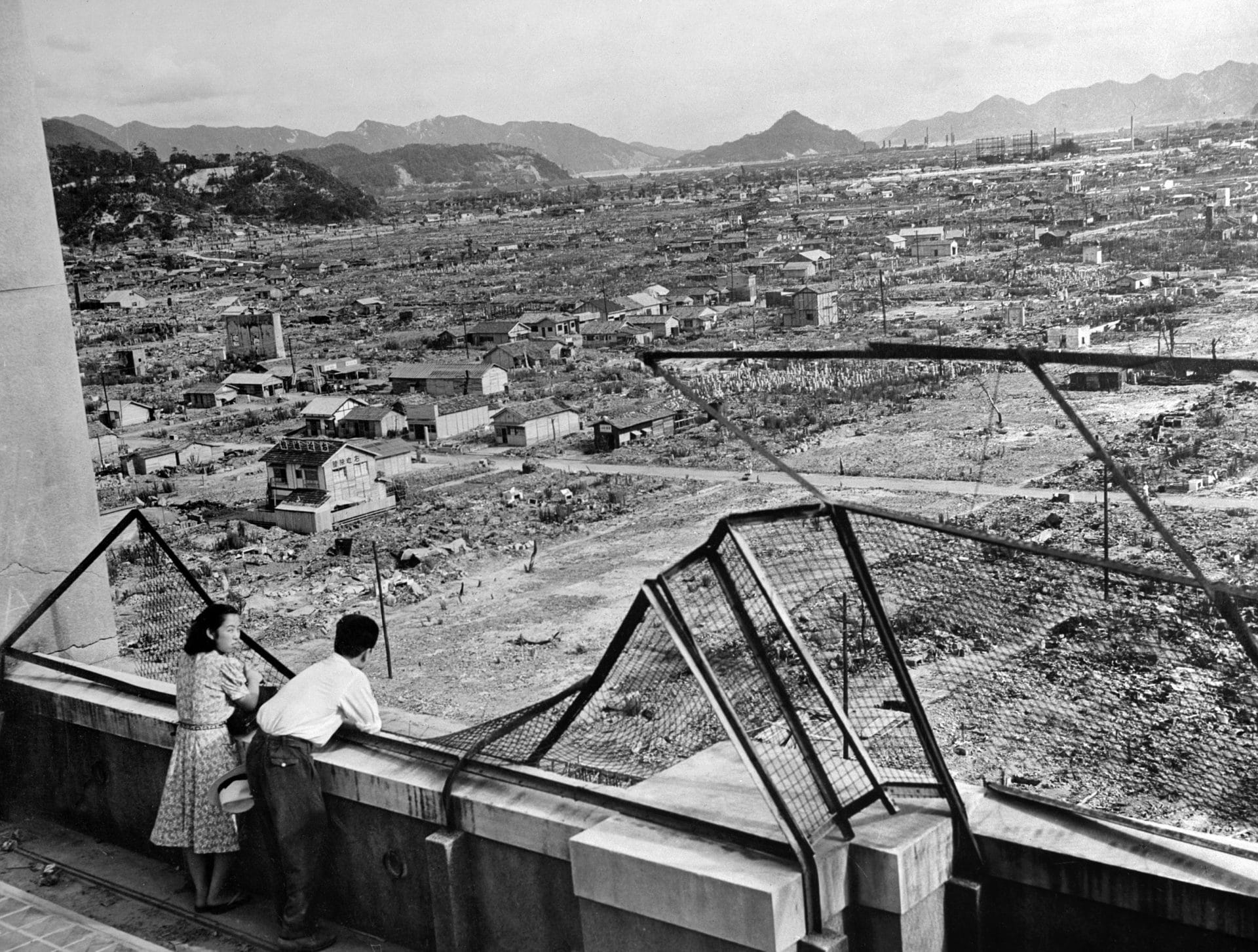
Looking south on the first anniversary of the Hiroshima bombing on August 6, 1946. (Getty Images)
Japanese-led reconsiderations
The immediate efforts to account for the dead and injured at Hiroshima and Nagasaki were part of a broader project to understand the effects (and effectiveness) of atomic weapons more generally, with an eye toward the fact that Hiroshima and Nagasaki might not be the last time they would be used. Of particular interest were the immediate and long-term effects of radiation exposure, which had never been studied on such a large population, with such large exposures. In 1946, the work of the Joint Commission was folded into a new, permanent organization, the Atomic Bomb Casualty Commission (ABCC). The ABCC’s primary task was focused on radiation casualties, and especially on the question of the heritability of genetic damage from radiation exposure. Working with Japanese investigators, the ABCC tracked tens of thousands of hibakusha, or bombing survivors, over the course of their lives. This work was viewed with some suspicion by the Japanese, in part because of the great amount of secrecy that surrounded it during the Occupation of Japan, and has been criticized for not taking the Japanese researchers’ own findings seriously. In 1975, the ABCC would become reconstituted as the Radiation Effects Research Foundation (RERF) and continue this work, with more control by the Japanese than the ABCC had allowed for. (For more on the history of the ABCC, and its transition to RERF, see M. Susan Lindee’s 1994 book Suffering Made Real: American Science and the Survivors at Hiroshima).
It is not clear that the ABCC or RERF ever made their own independent casualty estimates; the typical numbers cited for the dead at both cities in this period appear to come from the estimates discussed above, especially that of the Joint Commission.
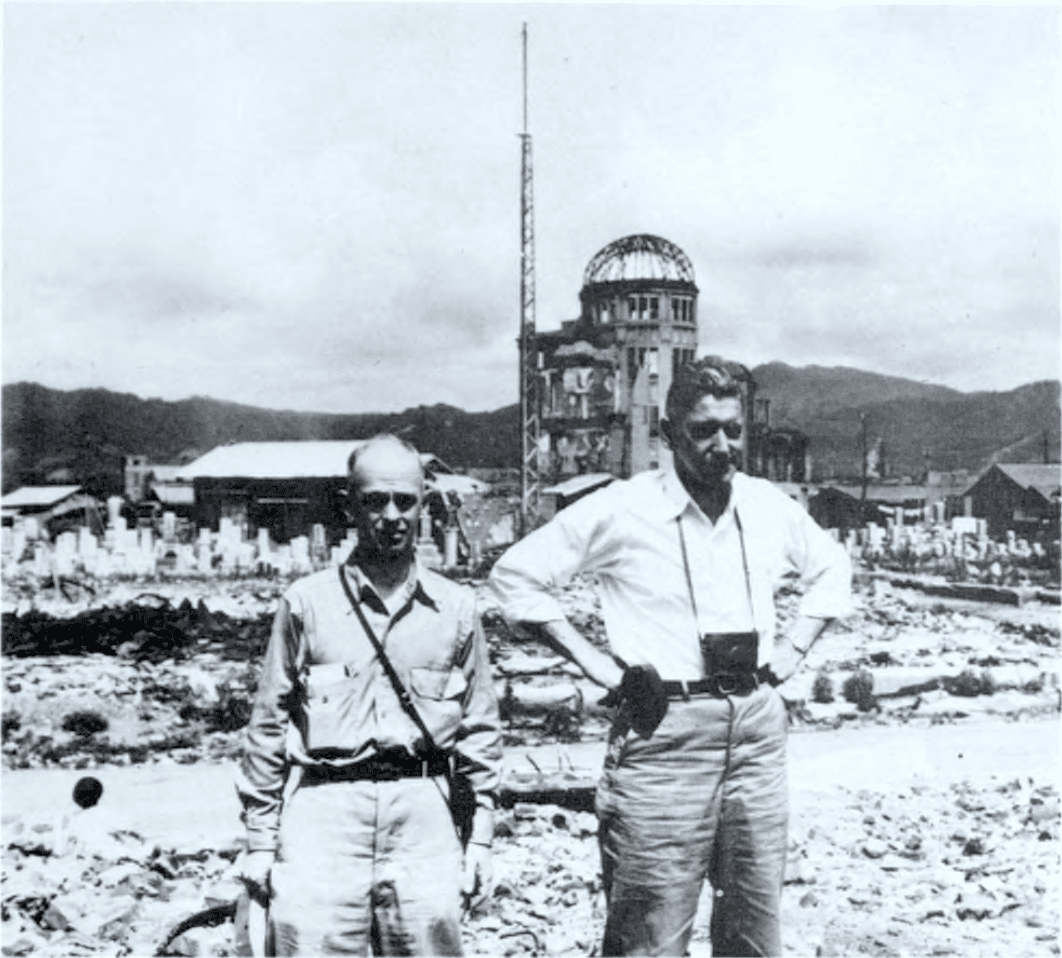
Beginning in the late 1960s, several efforts were taken to reevaluate the total casualties at Hiroshima and Nagasaki, spearheaded by the Japanese. One can see these as part of a general movement by the Japanese, beginning in the late 1950s, to mobilize their status as radiation sufferers, both for the atomic bombings and for the Castle Bravo accident (which exposed a Japanese shipping boat, killed one of the sailors, and led to a temporary closing of fish markets due to contamination concerns), in opposition to nuclear weapons. Japanese efforts to amplify the stories and needs of the atomic bomb survivors led to a renewed effort to catalog the bombs’ effects, by representatives in the cities of Hiroshima and Nagasaki starting around 1968. This work led to attempts to get a formal United Nations investigation into “the after-effects” of the bombings in 1975, which attracted the support of the UN Non-Governmental Organizations Committee, which in turn led to a three-city symposium in 1977, split between Hiroshima, Nagasaki, and Tokyo.
This symposium, which is also where the Japanese term hibakusha was brought into broader international use, involved the creation of an International Investigation Team, of which a Natural Sciences Group was tasked with assessing the number of casualties from the bombings. Their eventual estimates were significantly and deliberately higher than the estimates of the 1940s: They estimated that by the end of December 1945 some 140,000 (±10,000) people had died in Hiroshima. For Nagasaki, they estimated that 70,000 (±10,000) had died.
Neither the estimate of the Joint Commission, nor these later, higher estimates, can be easily dismissed with aspersions that they were deliberately trying to under- or over-count the data.
The large variance between these and the mean of the 1940s-1950s estimates is striking. A later report detailed, at great length, where the International Investigation Team believed the earlier studies had gone wrong. Fundamentally, they disagreed with estimates as to how many people were in both cities on the days of the bombings. The earlier studies had been based heavily on official records, but then as now, official records only cover so much. In particular, aside from general re-estimates of the wartime populations of the cities, they believed that:
- Perhaps another 10,000 could be added to the Hiroshima total dead, based on military victims omitted from most American studies;
- Around 30,000 conscripted Korean workers may have been killed in Hiroshima; at least 1,500-2,000 Korean workers were killed at Nagasaki, though at least one estimate puts the number at 10,000 (these numbers, which are acknowledged to be very uncertain, are from Hiroshima and Nagasaki: The Physical, Medical, and Social Effects of the Atomic Bombings);
- There were also many commuting workers who were not official residents of the city who would have been there for the daylight raid.
These estimates have been made with tremendous care, and are not frivolous in any way. The later approaches compiled many different official sources and data from both the Japanese and the American efforts, along with acknowledging that there were considerable uncertainties, and they ultimately used the same sort of methodology as the Joint Commission. To put it another way, neither the estimate of the Joint Commission, nor these later, higher estimates, can be easily dismissed with aspersions that they were deliberately trying to under- or over-count the data. Clearly the researchers who made the later estimates felt that the Joint Commission and other earlier estimators had committed methodological errors, and if we could resurrect them, it is clear the Joint Commission staff would probably say the same of the later estimators.
But the nature of these estimates ultimately relies on the source terms: How many people were in the cities on the day of the bombing, and where were they within the city? And there is so much uncertainty in this that it is hard to know which, if either, of these range of estimates is closer to the reality of things. None of them are absurd.
Aerial photo of Nagasaki before and after the "Fat Man" bomb was dropped on August 9, 1945. (US Army Air Forces)
Finally, it is worth talking briefly about the longer-term casualties of the atomic bombings, though this is a huge subject that could use its own coverage. In the popular imagination, the atomic bomb’s major effects have been on a much longer time horizon, with fears of cancer and mutation being closely associated with the exposure to radiation. These effects were studied intently by the Americans and Japanese, and used to develop radiation standards still used today. (Lindee’s book has details on this.) Exposure to the levels of radiation prevalent at the Hiroshima and Nagasaki bombings does correlate with a higher cancer rate, but not nearly as high as many people imagine.
RERF’s Life Span Study, which followed the cases of 36,500 survivors of the bombings, found that by 1990, 13% had died of some form of cancer, but that only 9% of those cancers were in excess of the expected numbers for those cohorts. I have not seen any concrete attempts to calculate what the total attributable cancer deaths would be expected to be on all survivors should these numbers be considered representative, but if we assume that there were roughly 400,000 total hibakusha between the two cities, and that typical Japanese cancer mortality is around 8.5%, then a 9% increase to this would correspond to around 3,000 additional fatal cancers. This back-of-the-envelope calculation is not meant in any way to be authoritative, but to give a sense of the orders of magnitude involved — one cannot appeal to later cancers to dramatically increase the totals. And the larger estimates, I want to emphasize, are not reliant on the assumption that many tens of thousands of deaths occurred in the decades after 1945.
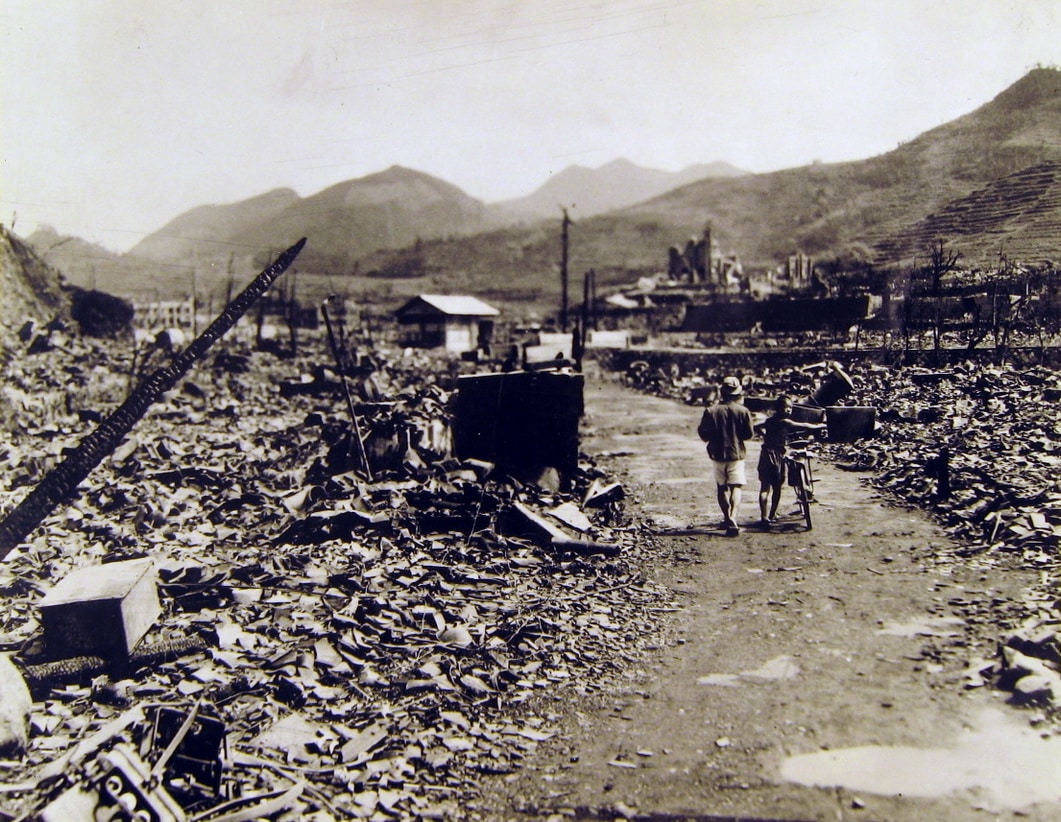
Nagasaki in November 1945. (US Army Air Forces via japanairraids.org)
So what numbers should one use?
Given all of the above, and the disagreements about source terms that can dramatically alter the totals, what numbers should people who want to discuss the victims of the bombings use when doing so?
It is clear that numbers, stripped from their technical contexts, are deployed primarily as a form of moral calculus.
There is, I think it should be clear, no simple answer to this. In practice, authors and reports seem to cluster around two numbers, which I will call the “low” and the “high” estimates. The “low” estimates are those derived from the estimates of the 1940s: around 70,000 dead at Hiroshima, and around 40,000 dead at Nagasaki, for 110,000 total dead. The “high” estimates are those that derive from the 1977 re-estimation: around 140,000 dead at Hiroshima, and around 70,000 dead at Nagasaki, for a total of 210,000 total dead. Given that the “high” estimates are almost double the “low” estimates, this is a significant difference. There is no intellectually defensible reason to assume that, for example, an average (105,000 dead at Hiroshima, 55,000 dead at Nagasaki) would be more accurate or meaningful.
My qualitative sense is that historians who want to emphasize the suffering of the Japanese (and the injustice of the bombing) tend to prefer the “high” numbers, while those who want to emphasize the military necessity of the attack tend to prefer the “low” numbers. And therein lies the real question: What do these estimates do for us, rhetorically? It is clear that numbers, stripped from their technical contexts, are deployed primarily as a form of moral calculus. And this should not surprise us, given that so much of the argument defending the atomic bombs relies on another casualty estimate: how many people might have died in a full-scale land invasion of Japan (numbers that have been similarly contested for decades, ranging from tens of thousands of casualties, to the more imaginative millions).
Separately, the number of dead at Hiroshima and Nagasaki have also been explicitly compared to the estimated dead from the devastating firebombing attacks against both Germany (notably Dresden) and Japan (notably Tokyo) that preceded them. This argument is again part of the justification of atomic bombings, an attempt to show that they were not “special” in any particular moral sense when put up against “conventional” Allied activity. Whether this is or isn’t a strong argument is out of scope for this article, but it is just worth keeping in mind what work the “low” numbers do, for they pale in comparison with the highest estimates of the Tokyo bombing dead, and with the estimates for a land invasion of Japan.
Given that there is no satisfactory way to decide whether the “low” or “high” estimates are more accurate, it is fairly clear there is no “neutral” choice to be made. It ultimately comes down to which sort of authority one wishes to go with: the official estimates of the United States military in the 1940s, or the later estimates by a group of anti-nuclear weapons scientists, largely spearheaded by Japan. Both made legitimate points in making their estimations; neither show any apparent perfidy or obvious intellectual dishonesty.
Short of choosing one or the other, is there an elegant way to talk about the range? Saying “between 70,000 and 140,000 people died at Hiroshima” captures some of it, but does not really capture the reasons for the variance in these numbers. I might suggest, if there is space to do so, saying something like:
“The United States military estimated that around 70,000 people died at Hiroshima, though later independent estimates argued that the actual number was 140,000 dead. In both cases, the majority of the deaths occurred on the day of the bombing itself, with nearly all of them taking place by the end of 1945.”
This makes the authorship claims more explicit (even as it generalizes quite a bit into “the United States military” and “independent estimates”), and also makes it clear that this range is the cause of two entirely different assessments, not the errors of a single assessment. And it clarifies the question of timing, if the latter clause is allowed in. It is a wordy explanation—journalists will no doubt question whether it is worth the space in an article where they probably just wanted a simple number to quote—but if we are going to invoke such uncounted dead, it is worth the effort to do it in a way that is respectful of the uncertainties involved.
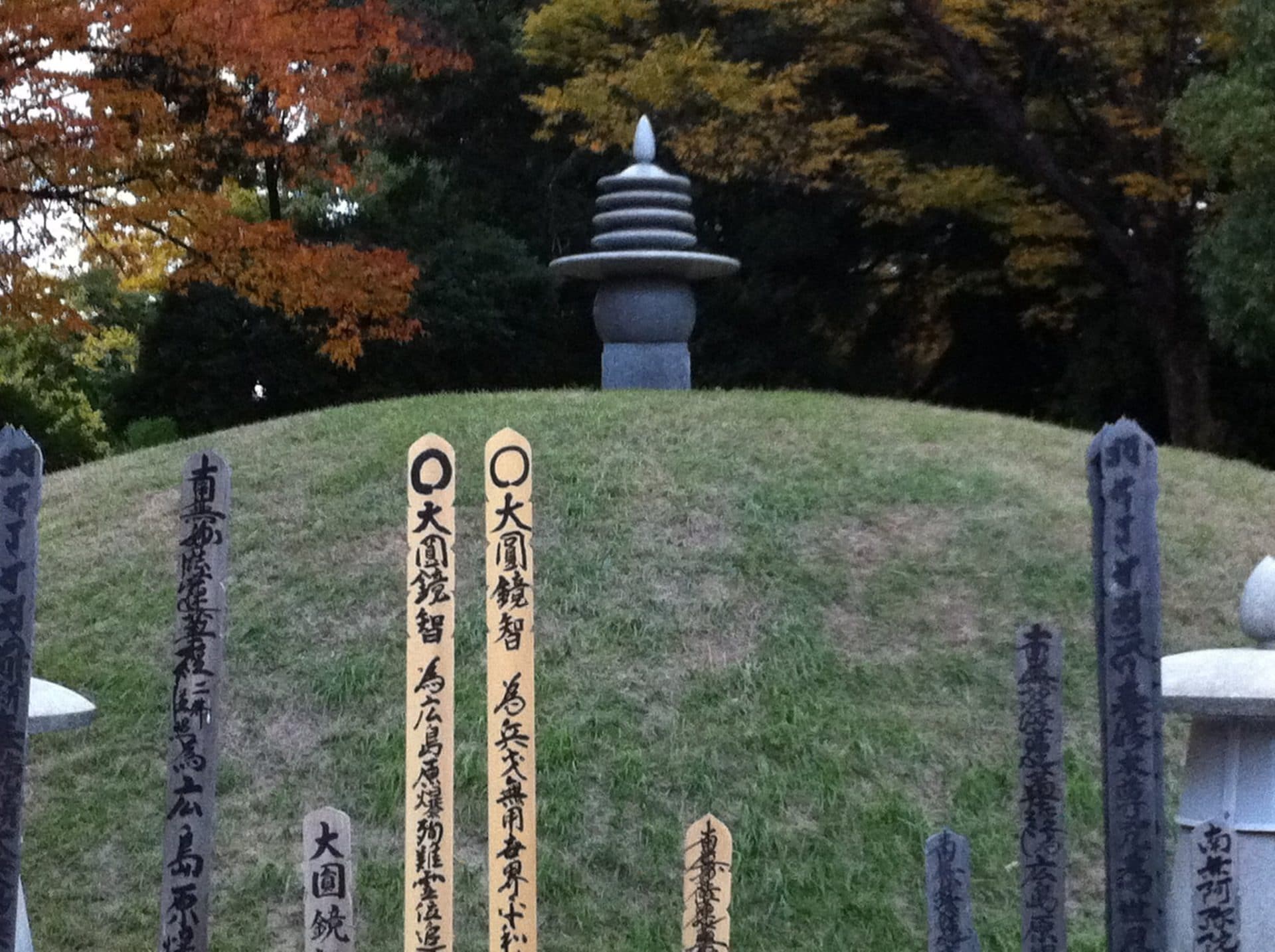
A vault within the Atomic Bomb Memorial Mound contains the ashes of Hiroshima victims cremated after the bombing. Remains of more than 800 have been identified but remain unclaimed. Thousands more remain unidentified. (Jeremy Carver / Creative Commons BY-NC-ND)
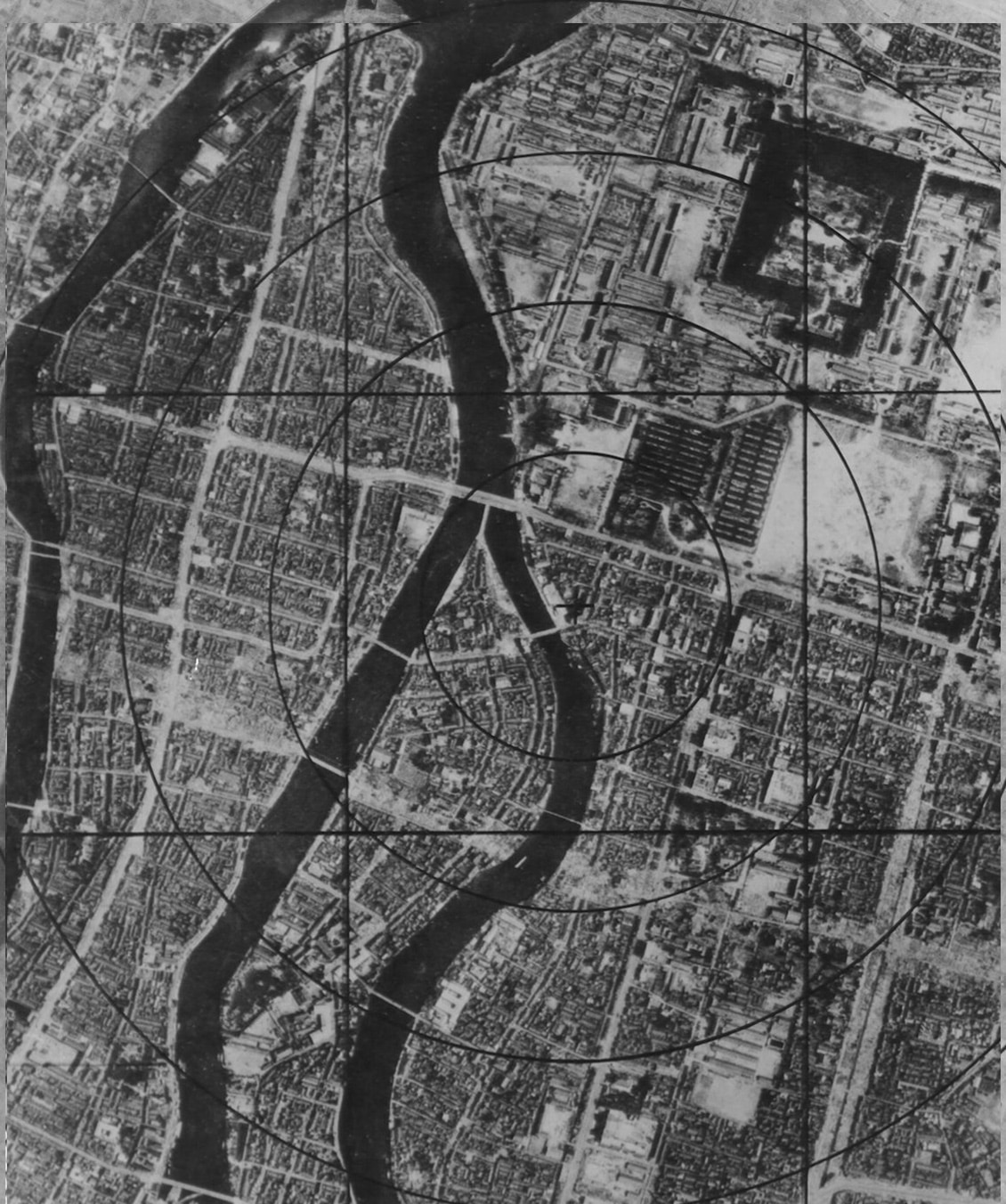
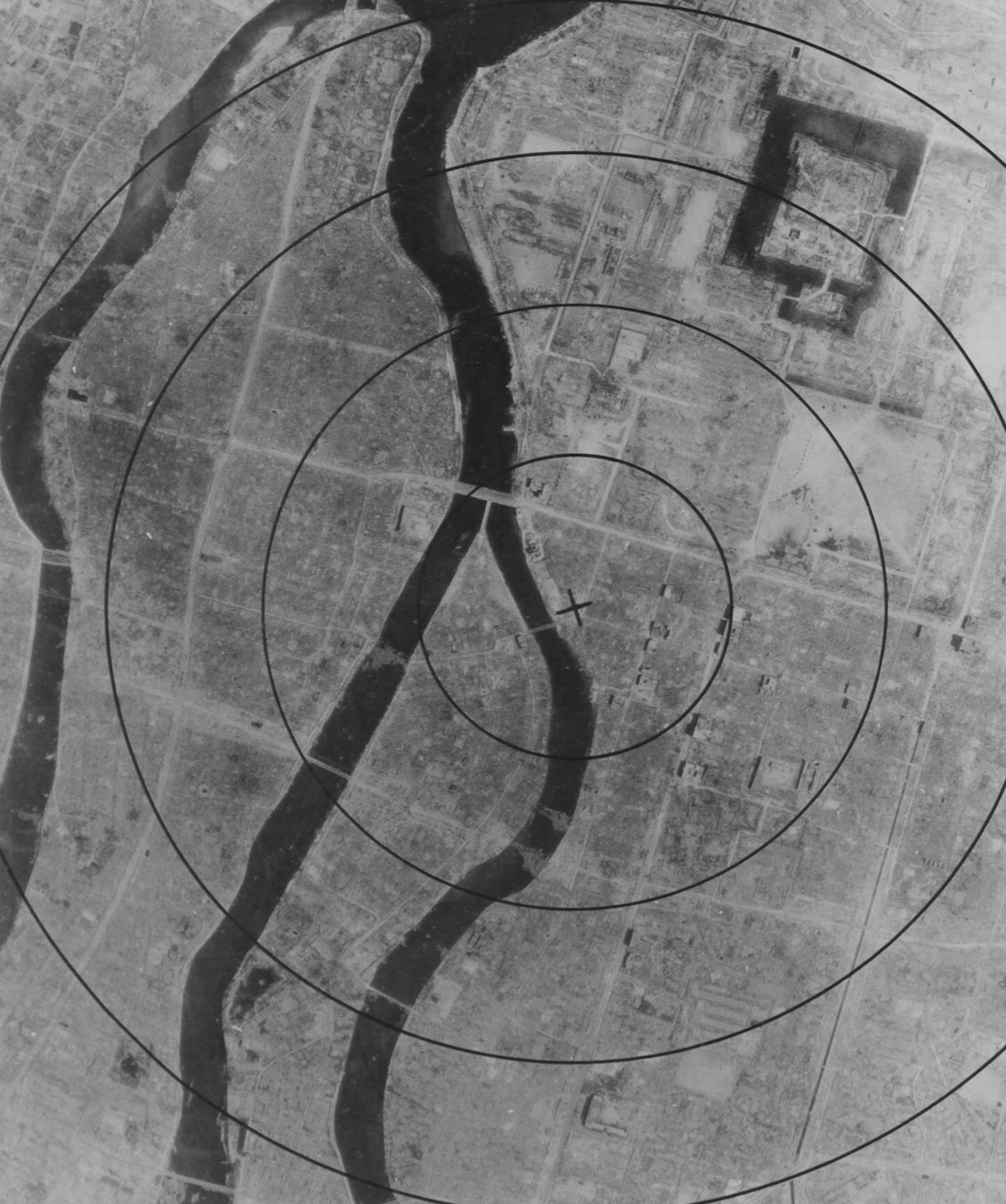
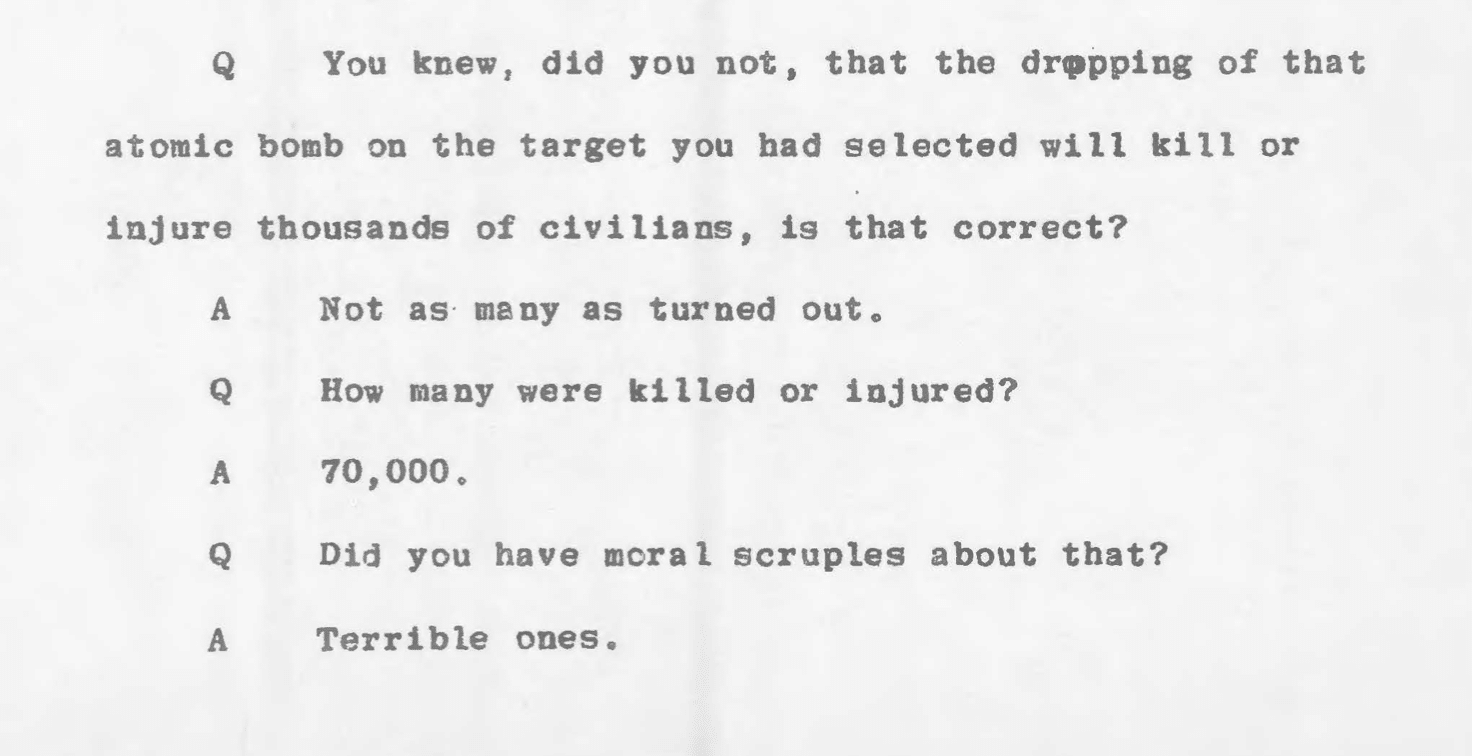
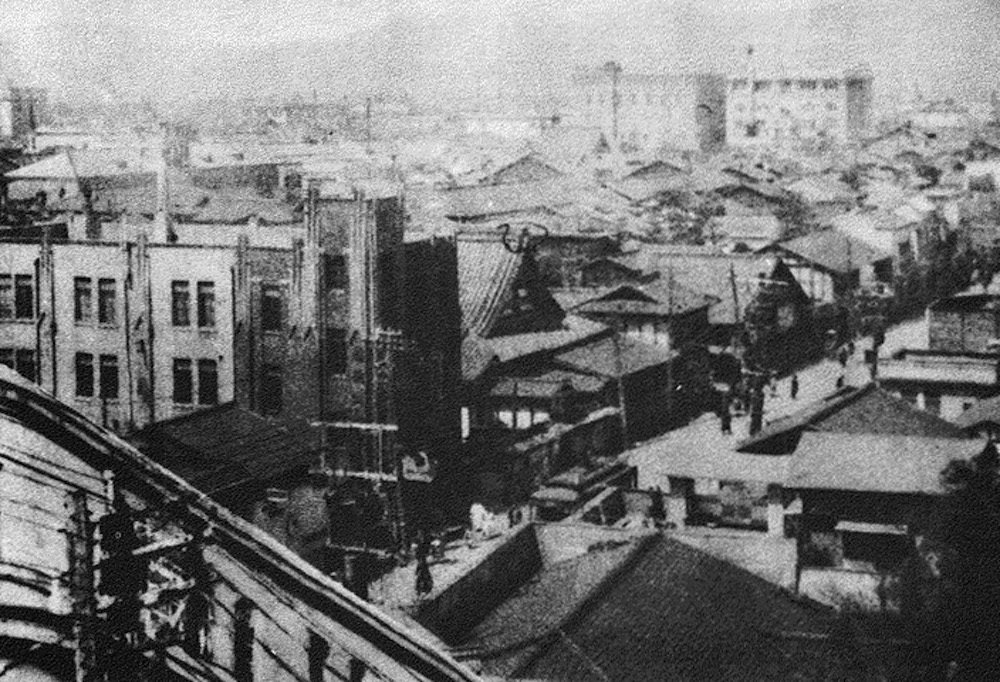
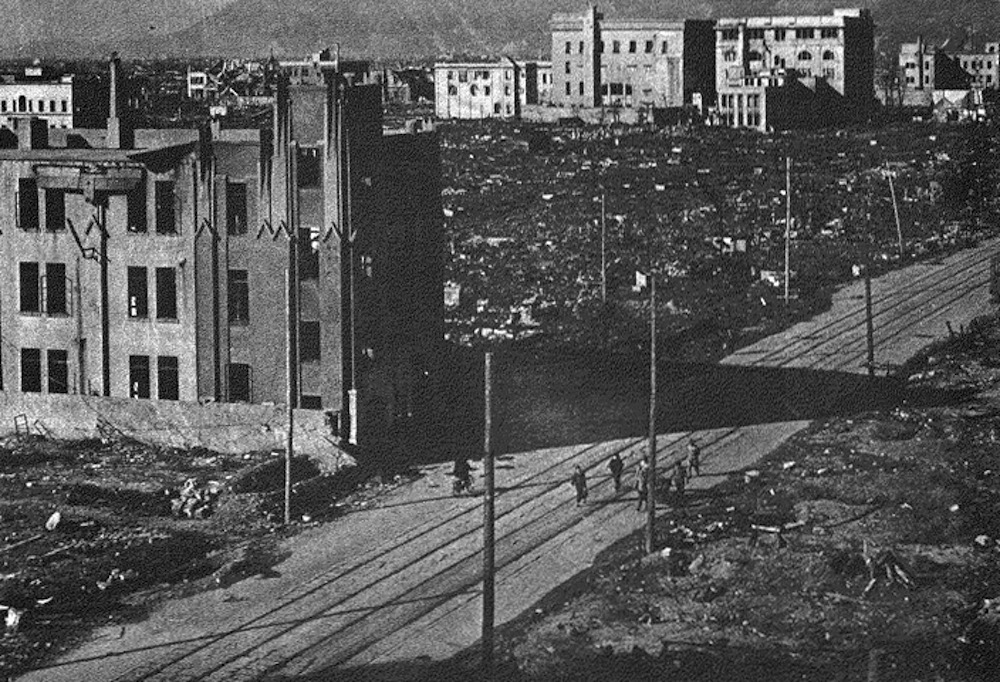
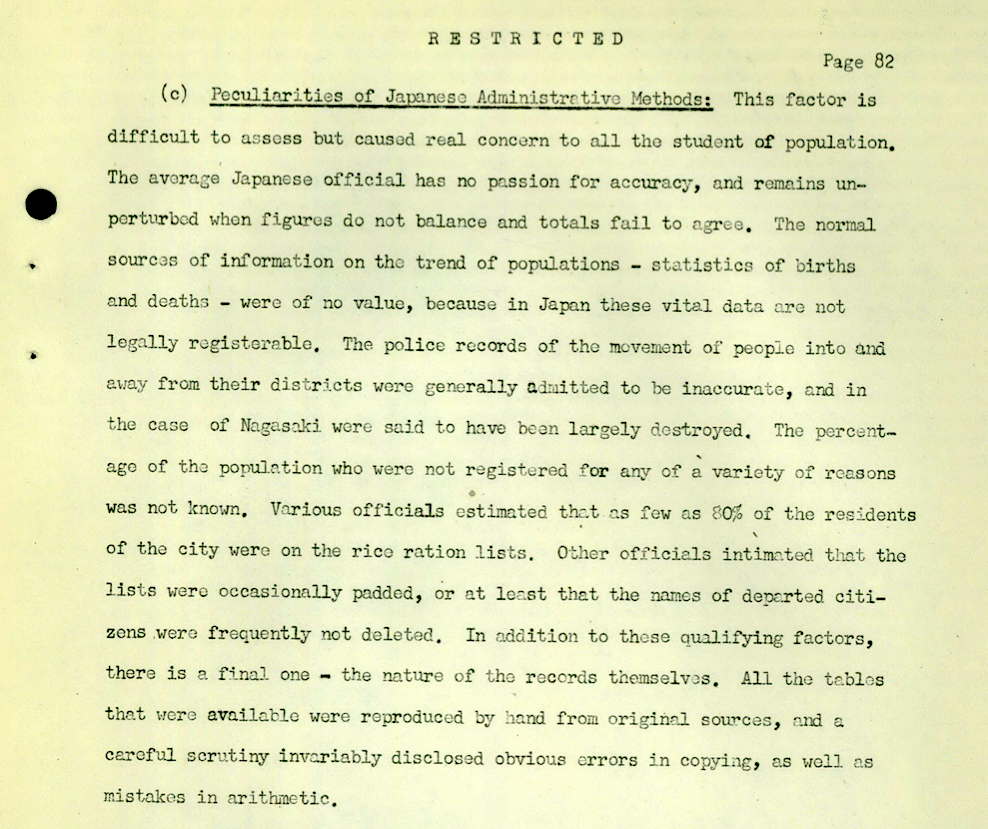

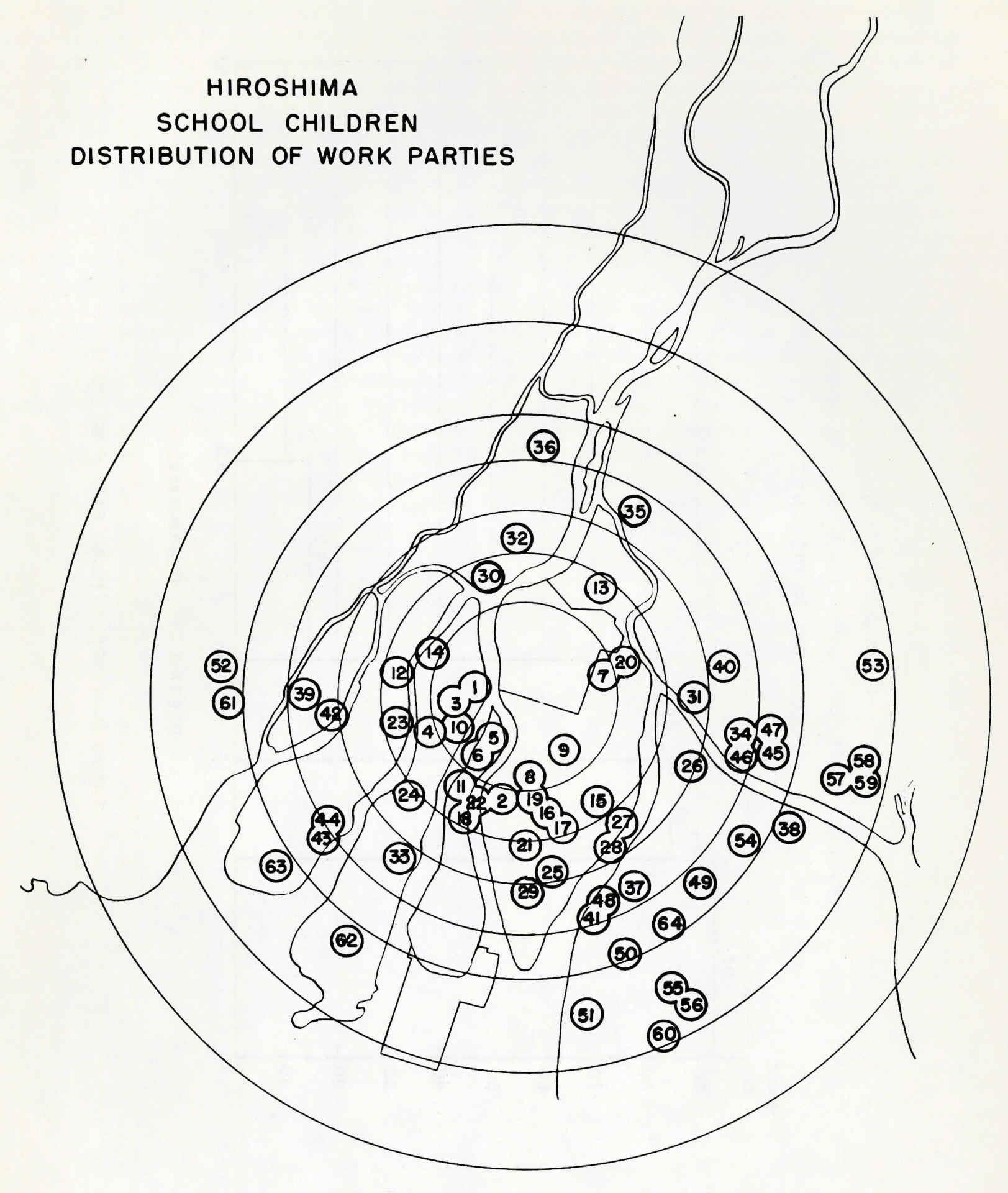
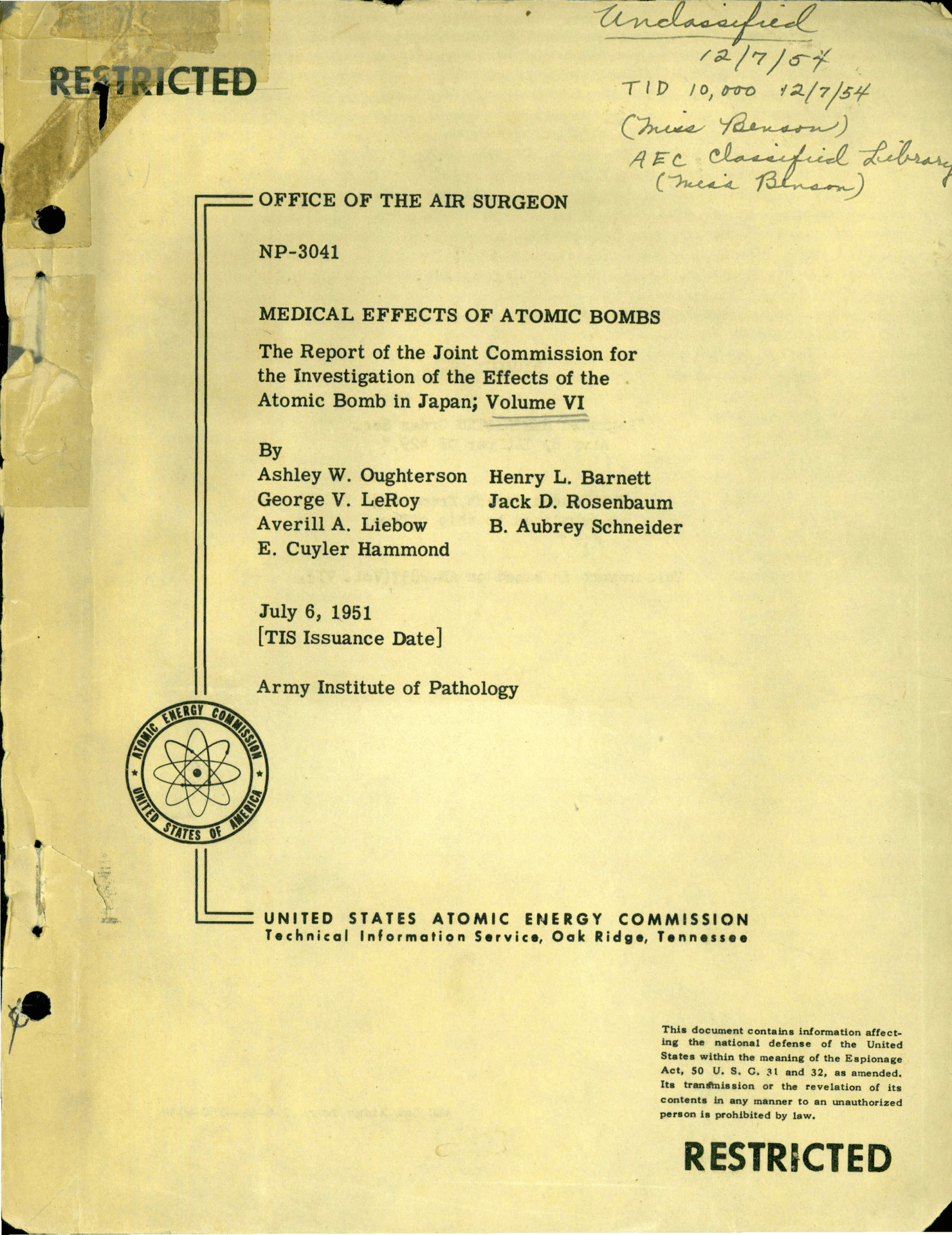
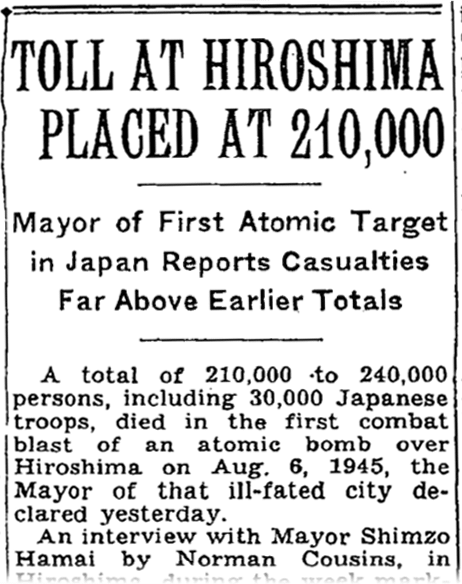
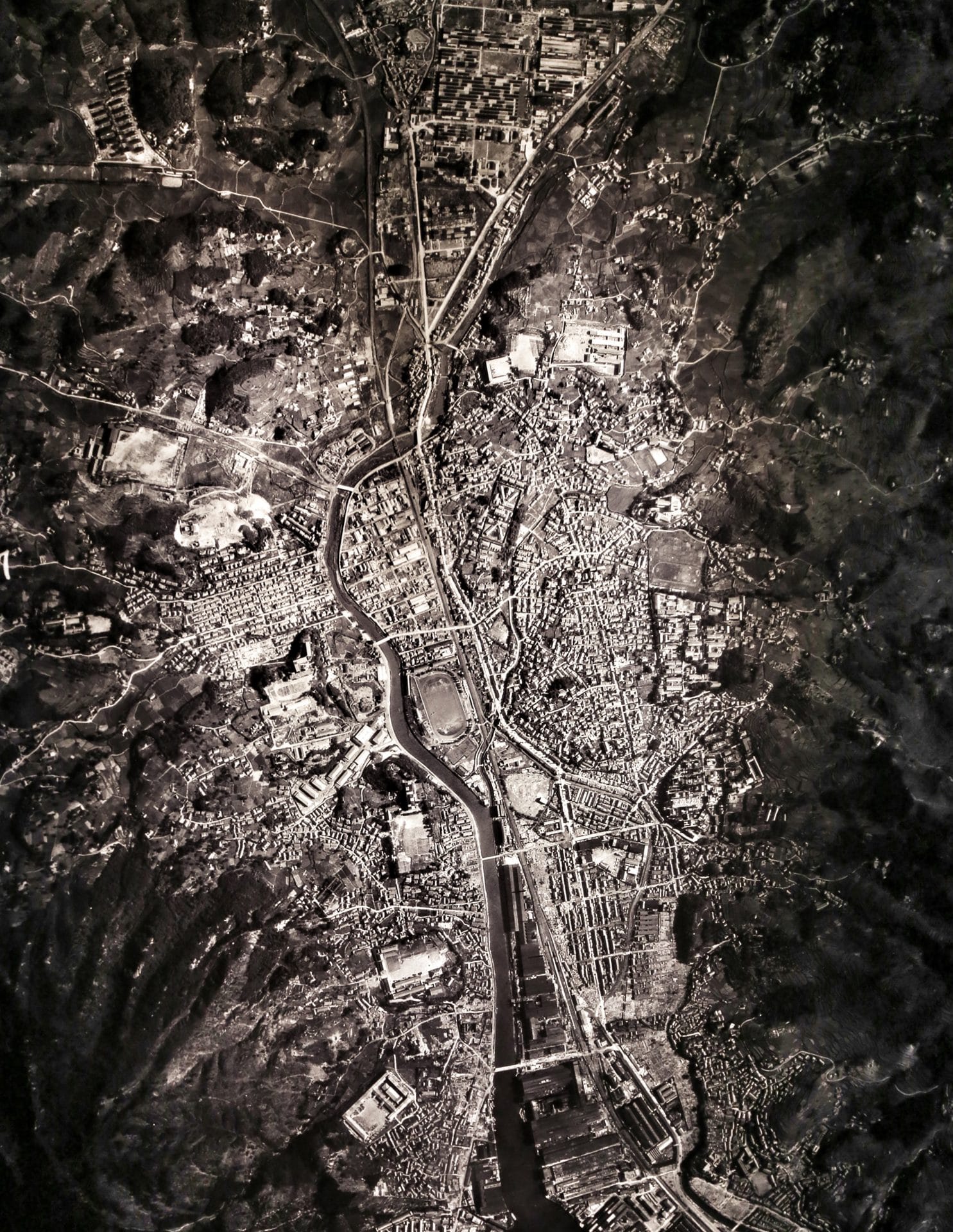
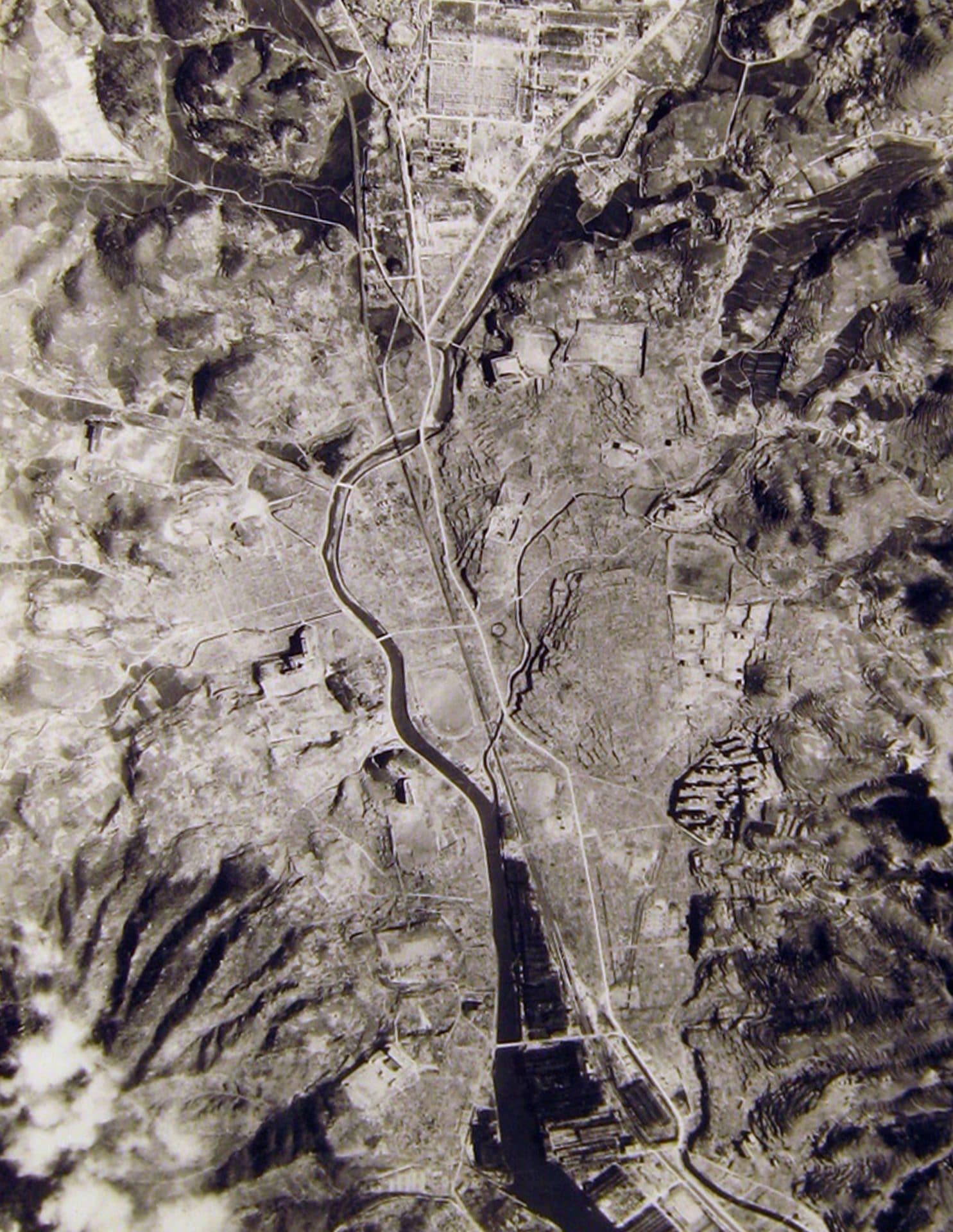

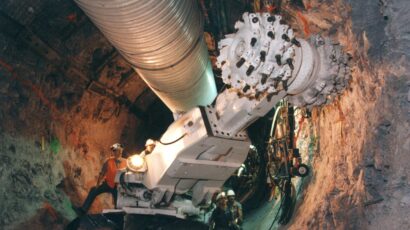

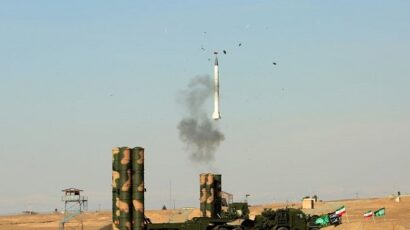




Another great piece by Alex Wellerstein. In my opinion, a pure nuclear historian in the company of Richard Rhodes, William Lanouette, and Cynthia Kelly. It is refreshing to read a paper such as this one that is meticulously researched and well grounded in factual information. Great job Alex.
After watching my father come home less his hand from the war with Japan and hearing my uncle describe his two years in a Japanese prison camp as a civilian, I will never apologize fro the bombs. If they saved one American life they were worth it. So tired of people doing so.
Read Hiroshima and listen the little voices of children burn by the bomb. Your father was an adult not a child
Japan killed far more than its share of children in its wars in Far East Asia – Japanese children were unfortunate victims, but far more of them were saved by the bombings than lost in them.
By your logic, a foreign country killing 500 US children during WW2 would be justified as the US killed thousands of Japanese children. Also, your last sentence is counterfactual. You can’t justify the killing of children, either by the Japanese or the US. End of story.
Look up what Japanese forces did to children when they were invading China and their neighboring countries
The War in the Pacific, even ignoring the European War, resulted in between 30 million dead, and 36 million dead, including about 800,000 non-Japanese children. It is part of the cold calculus of war, known as well by the Japanese as anyone that attacks on the civilian population are psychologically hardest to bear. The US chose its targets to balance minimizing death while maximizing the likelihood it would still bring an end to a war that had killed over $30 million and was killing people at a rate of 8 million people a year. Only 2.5 million Japanese died in… Read more »
Killing civilians to save one own soldiers is a Nazi solution, and is never justifiable or excusable. But then R. Payne presumes a U.S. invasion would have been required without the massacres at Hiroshima and Nagasaki, but should take a lesson from Major General Curtis LeMay, WWII Air Force Commander of the 21st Bomber Command, who said Sept. 20, 1945: “The atomic bomb had noting do do with the end of the war at all.”
Sorry but, in war, people treat others unfairly. The Americans are not innocent. I live in Asia, and we’ve seen the results of American aggression in Vietnam, Iraq, Afghanistan.
Please don’t use your father as an excuse for the atomic bombs
I fully support this, the Japanese where almost as bad as the Germans in WWII, And the only reason the Americans had to drop the bomb on them was because they would not surrender so they asked for it.
Alex, why did you advance the impress the Soviet Union and World aspect. The 509th Composite Group was formed and dispatched to Tinian Island to end the war, which in fact did end nine (9) days after the bombing of Hiroshima “Their goal was destruction and spectacle, to show the Japanese, the Soviets, and the whole world, what the potential of this new weapon was”. You know that the idea of a demonstration was a non-starter because there were two bombs as of August 6th and through August 9th and both had to be used to obtain the Japanese surrender.… Read more »
this, imo, was the beginning of the human(and much of the ecosphere”s) Unraveling…many humans have lacked compassion/empathy throughout our existence…but this was the unprecedented act that there was no going back from…that potential can, all by itself, wipe out all, if not most, life on this planet…and it”s just one symptom of this lacking…what really puzzles me is the ignorance… how do people know what they know(they that do) and continue to have children…? i couldn”t see condemning them to the future i expect…i”m glad one of the outcomes of our ignorance is now in play, worldwide…it doesn”t make me… Read more »
Very well written and diligently prepared report with excellent evaluation of the range of estimates of deaths both at the time and subsequently. Whatever the ‘real’ figures were the bombs achieved Truman’s objective which I believe was to end the Far East war and thus prevent the deaths of large numbers of American and Japanese citizens. My faher-in-law was a prisoner of war and worked on the Thai Buma Railway and was then sent to Japan on the Hell Ships to work in a ccarbide factory. Fortunately he just survived those terrible ordeals! Some years ago I met at a… Read more »
The bombs WERE NOT NECESSARY TO END THE WAR. That is a lie and has always been a lie. The Japanese were already suing for peace and were willing to accept any terms except they wanted to keep the Emperor, who they believed was a god. Stop trying to relativize this huge war crime.
False. The Japanese military command steadfastly refused to surrender. Even after Hiroshima and Nagasaki the top 5 military chiefs were 3-2 in favor of continuing the war to the last man, woman and child. The military even instigated an attempted coup d’etat to prevent surrender.
https://en.wikipedia.org/wiki/Ky%C5%ABj%C5%8D_incident
It was only Emperor Hirohito who overruled them and finally agreed to unconditional surrender and peace.
Neglects 40000 civilian dead in a week of aerial bombing of Stalingrad. Don’t know about military deaths at the time. Overall battle casualties approaching two million in less than 7 months. Don’t have deaths, but could be around 500,000. Also several days of bombing at Hamburg, about 37,000 dead. Dresden deaths now generally taken to be around 25,000 — probably fewer than Hamburg or Stalingrad. Depressing to think about in context of current slaughter in Ukraine. It is interesting that a modern analysis of the A bomb decision context notes that about 100,000 a month — few Americans, some Japanese… Read more »
The new RERF calculations and measurements produced during this reassessment have confirmed the yield and epicenter for the Nagasaki detonation while refining both these values for Hiroshima. Current measurements and calculations confirm a 21-kiloton-yield for the Nagasaki bomb and a burst point to within 2 meters of previous assessments. In Hiroshima, the estimated yield has been increased from 15 kilotons to 16 kilotons and the epicenter has been repositioned 20 meters higher and 15 meters to the west. While supercomputing technology made recalculation of the nuclear explosions possible, application of current geographic information systems technology has reconciled the exact hypocenter… Read more »
On the back cover of Sumiteru Taniguchi’s book, (Sumiteru Taniguchi, THE ATOMIC BOMB ON MY BACK, A Life Story of Survival and Activism,
Compiled by Tomokuni Hisashi, Rootstock Publishing, 2020. ISBN: 978-1-57869-040-4) estimated Nagasaki deaths by the end of the year is given as 73,884.
If the Nagasaki bomb was a couple mile off the aim point, either this was an error or the bomb-aimer was an unsung hero, saving tens of thousands of lives immediately. The fact that the actual explosion was thus much nearer the Urakami cathedral, Catholicism’s main centre for Japan, was presumably unknown to that bomb-aimer; but the possibility should be investigated that he knew it and intended it.
The before/after photos are intriguing. Regarding the first Hiroshima one, why is the epicenter placed on the wrong side of the river? It should be a block to the East of the Peace Dome. Regarding Nagasaki, the intended epicenter was meant to be where three valleys converged, allowing the blast to impact all three valleys. As the bomb was dropped in a random opening in the clouds (on top of the Catholic cathedral no less), the casualties were confined largely to only that one valley. In other words, if delivered on target the casualties might have been almost three times… Read more »
Read The Rape of Nanjing if you want to understand the Japanese humanities toward citizens. Or speak to American soldiers who were part of the Bataan death march. There are NO winners in war, only losers.
I strongly agree with you. Yes, the deaths in Japan were in the thousands, and women and children should have never paid the price. But Japanese culture at that time was shame and honor and simply just surrendering was not ever going to be an option. The US army had acted rather inhumanely. But at the time Japan was just as inhuman in many different ways — in Manchuria, Korea, and other parts of Asia. Japan simply did not care about human life, resulting in rape, genocide, slavery, and starvation. These are what Japan was committing on other human beings,… Read more »
Ditto, ditto, ditto Dagwood. The Japanese at that time were simply ruthless. It’s said when Harry S. Truman ordered the use of the A-bombs he slept like a baby that night. I think he knew they would end the war and that was that. No island invasion, no more massive American (or Japanese) losses from a conventional invasion. The Japs and Americans would lose so much more men from a regular manned invasion. The Japs were fanatics at the time. I knew an old Army nurse in the past who was based at a hospital on Tinian at that time.… Read more »
Most of the world agrees that nuclear weapons are not admissible, thus the signature of the TPNW (Treaty on the Prohibition of Nuclear Weapons) by most countries. If it’s unacceptable to use nuclear weapons now, there is no rationalization to Hiroshima and Nagasaki at that time by any means. Interestingly, the position of the U.S. on nuclear weapons is one-sided. U.S. will not sign the TPNW but supports the NPT (Non-Proliferation Treaty). If one nation is allowed to have nuclear weapons, any nation should be able to do the same. If it’s not ok to use nuclear weapons, that should… Read more »